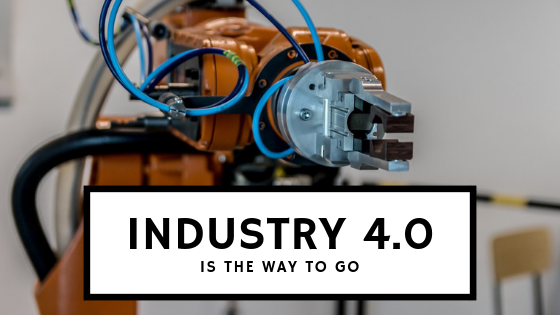For asset-intensive companies, preparing for the future has been a recent priority. The fast-approaching future for manufacturing is known as the “smart factory”; a system that is fully automated with sensors and capable of adapting to shifting conditions. This factory of the future is a part of Industry 4.0, which refers to the digitization of physical industries through advances in technology. Many leaders in manufacturing believe that the fourth industrial revolution will be digital.
Total automation of industrial practices is still something to look forward to, but businesses have already started to make changes to their facilities. Here are some reasons why companies are investing in the future, and what you should anticipate:
Finding Your Digital Twin.
One of the most innovative features of smart factories is the development of a “digital twin” to assets. This term describes the digital replication of physical systems, locations and devices for use in networks. Mapping out maintenance processes virtually is one of the pillars of the Industrial Internet of Things (IIoT). It creates a foundation to help identify how a system can be more efficient, save money or increase output quality.
A digital twin is a direct upgrade to computer-aided designs (CADs), which are used ubiquitously. CAD drawings simulate environments through software, allowing workers to visualize equipment and identify parts for repair. A digital twin of a piece of machinery takes it a step further. By including internal sensors, users can assess the status of the equipment in real time. Repairs can be flagged automatically and possibly resolved without human interaction. If serious, employees can bring up the item online and pinpoint where repairs need to be done which can save time in the long run.
Automation Can Be Agile.
It can take hours for factories to switch lines; product changeovers can lead to decreases in production and loss of profits. Smart facilities are moving towards the automation of assembly lines to help counter repercussions due to loss of productivity. Relying on technology increases agility; programs can analyze upcoming orders and adjust efficiently. It also eliminates human error, which could prevent potential accidents or mismanagement.
Automation allows managers to see the impact of changes immediately. If an electronic system is monitoring production in real time, progress can be viewed in real-time. This is invaluable to employees and business owners alike, as it may inform key decisions.
Lastly, automation can help deal with external factors that occur due to the nature of production. Delays in shipments, environmental factors and workplace accidents can all impact operations. By automating your system, energy and time can be put towards resolving those disasters quickly, directing optimal resources towards fixing the issue.
Proactivity: The New Preventive Maintenance.
Maintenance workers have been seeking methods to predict faults in operations and take action before they impact work. Reactive measures have often been considered the norm in the past, but technology has pushed towards working to establishing preventive infrastructure. Industry 4.0 puts the focus on proactive maintenance; smart factories will be able to predict complications in operations and fix them before they negatively influence production.
How Can We Help?
Preparing your facility for the future is no easy task. Before any real progress can be made with integrating the latest technology, asset-intensive companies need to have a high standard of EAM data. What is the use of putting incorrect data into a smart factory?
NRX AssetHub is a CMMS and EAM data solution that helps companies visualize, optimize and organize their electronic information. We help our clients prepare for the fourth industrial revolution. If you would like to learn more about how you can upgrade to a smart factory book a demo or contact us at 1-877-603-4679.
Share this article

